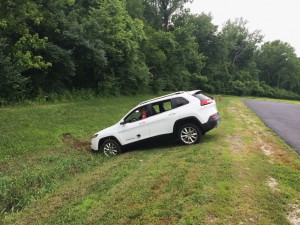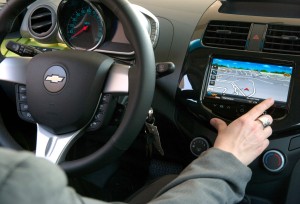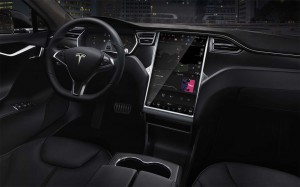Stung by a fatal crash that has raised serious concerns about its semi-autonomous Autopilot system, Tesla plans to announce a major update for the technology in the coming weeks.
But unlike a traditional upgrade, Tesla owners won’t be required to visit one of the battery-carmaker’s showrooms. Instead, they’ll have the revised software beamed to their vehicles, much as smartphone makers like Apple use so-called over-the-air, or OTA, technology when it’s time to update their operating systems.
“Tesla is changing the game,” said Roger Ordman, the marketing director at RedBend, and Israeli subsidiary of Harman International, that has become a leader in the development of over-the-air update technology. “The need for OTA is as big as the need for advanced driver technologies.”
Wireless updates are commonplace in the computer and smartphone world. It’s the method of choice for distributing everything from anti-virus updates to the latest operating system revisions. But the technology is just beginning to be accepted by automotive manufacturers.
(For more on Tesla’s Autopilot upgrade, Click Here.)
When Lincoln experienced problems with the Sync infotainment system on the then-new MKZ system several years ago, it offered owners a thumb drive containing updated software. Less tech-savvy customers were told to bring their vehicles into the service shop, a costly process as Lincoln had to reimburse dealers for their time.
For customers, the use of wireless technology could eliminate the need for some service calls, especially at a time when the number of safety-related recalls has been rising. Some of those could be solved using over-the-air updates, especially as vehicles become more high-tech.
While consumers could benefit by not having to visit showrooms, OTA technology could pay off for manufacturers, as well. RedBend estimates that about 6.4% of the recalls ordered in the U.S. last year “were software-related,” according to Ordman, and as more technology comes onboard, he added, “I don’t believe (that number) is going to go any lower.”
At an average $82 per vehicle, those recalls cost the industry about $440 million to resolve, often simply by plugging a memory stick into a vehicle’s USB port at the dealership. Over-the-air systems would slash those costs.
(Israel breeding generation of high-tech entrepreneurs. Click Here for the story.)
“It is clear that OEM (original equipment manufacturers) cost savings from over-the-air software updates will be the most valuable part of this technology — by far,” said Egil Juliussen, a principal analyst of automotive technology at IHS Automotive, and a co-author of a study on the technology released late last year.
Over-the-air technologies aren’t limited to updating software. General Motors’ OnStar subsidiary has used wireless systems to allow motorists to remotely unlock their doors, for example, and the technology can be used to remotely alert first-responders in the event of a serious crash.
GM is readying a new service that will monitor critical vehicle functions and send that data to the cloud for analysis. Running low on oil? Your water pump starting to fail? You’ll get a remote alert and even be able to schedule a service appointment without leaving the vehicle.

Last year, security experts managed to hack into a Jeep Cherokee and remotely drive it into a ditch.
A number of manufacturers have paired over-the-air technologies with smartphone apps. Nissan Leaf owners can remotely check the state of their vehicle’s battery and remotely start charging. But Nissan had to temporarily disable the service when it learned the technology was vulnerable to a cyberattack.
“We can’t make the mistake of not designing in cybersecurity protection,” when adding new technology to vehicles, including over-the-air update capabilities, cautioned Assistant U.S. Attorney General John Carlin, one of the keynote speakers at a cybersecurity conference held in Detroit in July.
Part of the problem is that today’s vehicles are not only loaded with high-tech safety, comfort and performance systems, but plenty of new avenues by which hackers can gain access, including new 4G LTE WiFi systems built into many new models.
Hackers are looking to exploit “potentially every channel on the vehicle that provides access to services or maintenance,” warned Saar Dickman, CEO of TowerSec, an Israeli cybersecurity company that works with a number of automakers.
Despite such concerns, over-the-air technology is expected to become commonplace on tomorrow’s vehicles, consulting firm ABI Research estimating it will be found on at least 200 million vehicles around the world by 2022.
(Fiat Chrysler issues “bug bounty” to reduce cybersecurity risks. Click Here for the story.)


